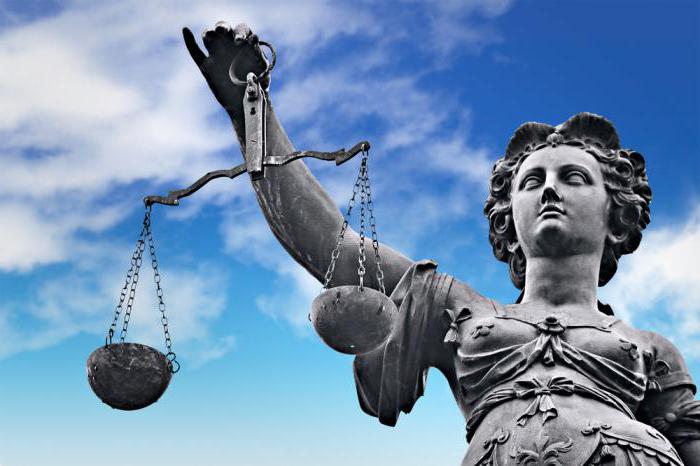Human relationships have always been complex and ambiguous. From the moment people began to unite in social groups, the problem of regulating their direct interaction arose. At the same time, social relations arising in various spheres of life increased. Therefore, over time, difficulties arose with their ordering and control. To somehow solve this problem, people began to search for regulators of public relations. The first two, violence and religion, did not do their best. This kind of influence only spoiled society and led to a halt in its evolution. However, with the invention of law, everything has changed. Legal norms have become the main regulator of public relations. To date, the situation has not changed. But it is worth noting the fact that, in addition to law in general, the existence of separate institutions is also necessary, which will help to implement specific norms in certain legal sectors.

One of these institutions is criminal liability, which is implemented through punishment. It has its own characteristics, goals and functional features. Moreover, the use of criminal penalties is allowed only in individual cases, as will be described below.
Similarity of terms
Very often people confuse categories such as criminal liability and criminal punishment. It should be noted that they are not identical, although they are very similar to each other. Nevertheless, criminal liability is one of many types of legal liability. Its essence lies in the fact that society reacts most negatively to any behavior of an illegal, criminal nature. Moreover, criminal liability implies the application by society of the appropriate punishments to perpetrators. As we see, in this case the category of responsibility is broader, and in its structure involves the use of separate criminal penalties. In addition, the first term also implies a whole complex of mechanisms that affect not only individuals, but also crime in general.
Concept of criminal punishment
Before considering the individual objectives of criminal punishment, it is necessary to understand the essence of this concept. If you take into account the above aspects that characterize liability, the second category represents certain measures of influence applied by the state. However, such measures can only be used in relation to persons who have been legally recognized as guilty of committing criminal acts. In other words, criminal penalties are a consequence of any dulling, which is enshrined in the relevant regulations. In its structure, this reaction of the society implies a set of certain legal measures of influence, each of which carries its negative consequences for the perpetrators of crimes. If we talk about the global role of the criminal punishment system, then it is simply necessary for building a civil society.
Indeed, only in a safe environment can a person fully realize his rights without fear for his life and property.In addition, criminal punishments show the state policy of the same name, the quality of its reaction to all violations of the legal regime. Moreover, the severity of punishments will testify to the evolution of public consciousness and the role of law in society. If we talk about the legal basis of the presented category, then such is the Criminal Code. The punishments provided for therein are standard. That is, only they can be used to punish individuals. In this case, the sentence is made by the court. This allows you to comply with the rule of law. In a different order, the imposition of punishment is impossible.

The theoretical basis of punishment
Today, one can distinguish a lot of various theories that answer the question of what punishment is and where it came from. However, not all of them are based on reliable historical and theoretical facts. Nevertheless, many scholars are inclined to believe that punishment at all times was nothing more than retribution for the crimes and offenses committed. With the development of an understanding of the state structure, the reaction of society began to be identified with the activities of the country's apparatus. In other words, punishment is a measure applied precisely by the state, which, in turn, is the brainchild of society. This theory is largely due to the fact that today criminal penalties are applied only on the basis of the sanction of a judge in almost all countries of the world. The Russian Federation in this case is no exception.
Punishment functions
It should be noted that in some cases the basic interests of society can be protected and restored only through negative criminal measures. It follows that the use of punishments is carried out to implement certain functions. The first key direction of all negative measures is the fight against crime. That is, criminal penalties are applied primarily in order to completely eradicate such phenomena in society as offenses and crime. Because these factors largely decompose the social fabric and impede the normal functioning of the legal field as a whole.
In addition, the fight against crime helps to instill in people hope and faith in the legal system of the state and its law enforcement agencies. Another important function is social justice, or rather, its restoration. The fact is that in the implementation of certain socially dangerous acts a person harms social relations and certain legal or physical persons. This can manifest itself in the form of material or property negative phenomena. In any case, the state is faced with the task of restoring the violated powers, so that social justice will prevail. Criminal penalties in many cases help to realize this function.
Of course, the most important task of any kind of punishment is the correction of convicts. Indeed, a person can be punished in a large number of ways. But there will not be much use for this if certain criminal trends remain in the minds of the person. Therefore, the state system of punishments is faced with the task of not only infringing on criminals in their rights, but also re-educating them, laying in the minds of such people the necessity and importance of social norms, as well as the fear of the law.
It should be noted that crime prevention is not one of the functions of criminal punishments, as many people think today. The negative reactions of the state mentioned in the article will be realized only after the direct commission of the offense. In addition, to apply the punishment to a specific person, it is necessary to carry out a certain procedure, which includes the activities of not only judicial, but also law enforcement agencies.Therefore, the prevention of crimes is simply impossible in this case, because at the time of the imposition of a punishment, a violation of rights is actually already present. In addition to the functions presented, it is also necessary to highlight a number of specific characteristic features that determine the specifics of all negative state measures, without exception.
Signs of punishment
All existing measures of state influence on criminals are characterized by a number of specific features. In the scientific community, there is no consensus on the list of characteristic features of criminal punishments. Scientists, as a rule, distinguish features that are completely different in nature. However, there are a number of characteristics that determine all punishments without exception, namely:
- The special nature of punishments is determined, first of all, by the specific order of their application, as well as by the legal fact that makes it possible to implement a negative state measure. As for the first factor, the author has previously pointed out the special role of the judicial and law enforcement agencies in the process of implementing responsibility. The legal factor in this case is nothing more than a certain corpus delicti, which implies a certain article of the criminal law normative act.
- There is such a sign as the personal nature of the punishment. It implies the personal responsibility of the person who directly committed a socially dangerous criminal act. In other words, the punishment cannot be transferred to another person.
- Criminal punishments are almost always certain restrictions on human rights. The nature of such negative phenomena will directly depend on the gravity of the crime and other legal factors.
Thus, the features presented characterize the penalties applicable in criminal law, which also allows you to see the specifics of the institution of responsibility of this legal industry. It should be noted that the public nature of negative government measures today is quite significant. That is, the application of criminal penalties is carried out on behalf of the state. This allows us to ensure the legality and justice of the same name responsibility, and also prevents the involvement of innocent persons.
The concept of the objectives of criminal punishment
In addition to the functions presented, there are also separate goals of negative government measures. In some cases, they are similar to the first category. The main difference is that the functions are aimed at implementing the entire institution of responsibility, that is, this is its actual manifestation. The goals of criminal punishment are the end result that affects specific social relationships. For many centuries, the problems of goals caused a lot of discussion in the scientific community. Scientists could not understand the main purpose of criminal punishment. Currently, this problem is gradually ceasing to exist, so the classical criminal law school developed. According to her concepts, the following objectives of criminal punishment exist, namely:
- General prevention that is, an influence on the mind of the offender in such a way that he would not want to commit criminal acts in the future.
- Special prevention - This is a "revealing" factor of all punishments. It is characterized by the fact that negative state measures should show to other persons prone to crimes the irreversibility of punishment for criminal acts.
- Retribution - This is one of the main goals of criminal punishment. It indicates the mandatory occurrence of negative consequences for attackers. That is, the violated rights of the victim will need to be answered. In this case, the punishment should be related to the harm that was actually done.
Thus, the goals of criminal punishment show the importance of this category for society and its protection. In addition, negative government measures must exist to ensure law and order in a given state. Indeed, if crime will not restrain anything, anarchy may begin on the territory of the country. Of course, not a single modern leader wants such an outcome for his state. Therefore, criminal law and politics are the central interest of the top leadership in any country. In some cases, the purposes of criminal punishment and its types may indicate trends in a given society.
Existing classifications of sentences
To date, two approaches to the consideration of the system of criminal government measures can be distinguished. In the first case, the punishments are distributed in the usual list, according to the principle of increasing or decreasing negative consequences for the convicted person. The second approach involves a more complex classification, which is provided through a systematic approach. It should be noted that the structure of the mechanism of negative state forms of influence affects many practical issues. For example, the imposition of criminal penalties depends on the type of responsibility. Thus, we can distinguish the following methods of classification of punishments, namely:
- Judicial Order there are basic punishments and additional ones. The first type is used to directly implement the functions of criminal liability, and the second reinforces the negative legal effect.
- Depending on the subject composition general punishments are allocated, that is, those that apply to any persons, and special ones - assigned only to individual persons, for example, civil servants.
- If you consider the nature of the negative measure of a punishment, then we can distinguish property measures related to forced labor and restriction or imprisonment.
Thus, the protection of citizens' rights and public safety is realized through the application of one form or another of legal liability to convicts. In this case, it should be noted that each punishment has its own characteristic features, which will be discussed later.
Features of fine, violation of rights and forced labor
As practice shows, a fine is one of the most common types of criminal punishment in many countries of the world. In most cases, it has the best effect on the human mind, which allows the correction of convicts. This punishment is a pecuniary punishment, which is expressed in the seizure of a certain amount from the offender for a committed act. In this case, a fine is the easiest form of punishment. Much more burdensome forced labor. Their essence is that the offender is involved in compulsory labor for the benefit of society. This type of punishment has its own history. The earliest type of forced labor was hard labor.
Loss of rights is a relatively controversial form of punishment. It is not used in all countries. The bottom line is that a person is deprived of certain political, personal or civil rights. There is also such a type of defeat in rights as “legal death”. In this case, the offender is deprived of almost all available rights. In the Russian Federation, prohibitions on engaging in any activity or holding a specific position are actively used.
Imprisonment as one of the most common punishments
The most popular punishment in modern society is imprisonment. It represents the placement of people in special places, such as correctional labor institutions, with subsequent restriction or complete deprivation of will.That is, the offender is serving his sentence in one place, without the right to leave him. Typically, the measure presented applies to repeat offenders or to the perpetrators of the most serious crimes. The process of implementing the punishment, in turn, may differ depending on the psychological characteristics of the person, the severity of his actions, the presence of aggravating factors, etc. The most severe subspecies of this punishment is life imprisonment. It is characterized by the fact that a person is placed in an appropriate institution without the right to be released from him at any time.
The death penalty and its features
In many states, such a punishment as the death penalty once existed. It is characterized by the fact that a person is forcibly deprived of life for crimes committed. Today, many world countries have refused this punishment, since they consider it extremely inhuman. Nevertheless, there are still states in which the death penalty is applied. If we talk about the form of execution of this punishment, then there are many types. Far from always the death penalty brought a quick and painless death. An example of this is an electric chair. However, in most cases, killing was used such as shooting or introducing a killer injection into the body. During the Middle Ages, hanging or decapitation was actively practiced. Current trends are based on the fact that the death penalty, although it is the death penalty, does not bring such a psychological burden as, for example, imprisonment for a certain and life term. Based on this, in almost all countries of the world it is precisely these negative state measures that are used.
Thus, criminal penalties are a series of negative measures that have different manifestations for those guilty of committing crimes. It should be noted that the application of criminal penalties should be carried out only on the basis of the principle of legality and respect for human rights and freedoms, as this is provided not only by national requirements, but also by many international acts. Therefore, for the constant evolution of criminal penalties and the effectiveness of their application, it is necessary to carry out theoretical developments in the presented field.